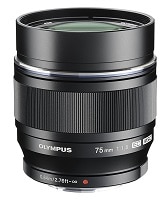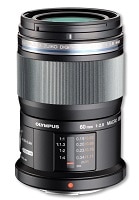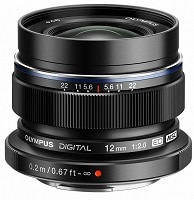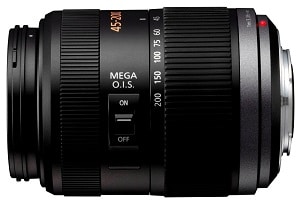What Micro Four Third lens to buy?
Developed jointly by Panasonic and Olympus, the four-thirds micro format (mft or micro 43) was a pioneer in the hybrid camera market. Thanks to their advance, Olympus and Panasonic Micro 4/3 cameras have the most complete range of lenses of any mirorless cameras on the market.
Both companies have designed a great choice of lenses for all situations, from wide-angle to telephoto for wildlife photography, so it’s complicated to find your way around at times… this selection includes the best Micro 4/3 lenses by price and photo type. You’ll find the top 5 at the end of this page. I hope this selection will help find the right lens for you.
Olympus or Panasonic?
The two brands of lenses are interchangeable and can be used on your Panasonic or Olympus camera. However, since Olympus cameras have image stabilization integrated directly into the body, none of their lenses are equipped with integrated optical stabilization (except for a few very recent models).
An advantage to this is that Olympus lenses are generally smaller and lighter than Panasonic lenses. So you can use Olympus lenses on a Panasonic camera but you won’t have image stabilization.
Note: Product links in this article lead to Amazon.com
Summary
- Pancake lenses
- Portraits
- Macro
- Wide angle
- All-in-one (travel lenses)
- Zoom
- Comparative table
- Top 5 best Micro 4/3 lenses
- Some terms to know
- How to choose your Micro 4/3 lens?
PANCAKE LENSES
For those who are looking for lightness and compactness above all:
1. Panasonic Lumix G Vario 12-32mm f/3.5-5.6

Filter size: 37 mm
A well-made lens, sold at a correct price if you have not already had it in kit form with your camera. Very compact and lightweight, it has a very good sharpness and will be suitable in most conditions, but it will be particularly useful for landscape photography thanks to its wide angle (its focal range is equivalent to a 24-64 mm).
Its aperture of f/3.5-5.6 makes it more suitable for daytime photography or with good brightness, otherwise you will have to opt for a brighter lens to shoot in darker conditions. Despite its small size, it has an integrated stabilization.
_
_
2. Panasonic Lumix G 14mm f/2.5 ASPH II

Filter size: 46 mm
The lightest pancake lens in this selection with its 55g on the scale. Despite its light weight, its construction quality is very good. This ultra-flat fixed lens will delight those who are looking for a discreet and bright lens to go with their Panasonic or Olympus hybrid camera. Thanks to him, you can hold your device in your pocket.
Its f/2.5 aperture allows you to take beautiful pictures even in low light conditions. In short, an excellent choice for those who want a compact and discreet all-purpose lens. It does not have an integrated image stabilizer.
_
NOTE: With an almost identical focal length but more expensive, check also the Panasonic 15 mm / F 1.7 Leica DG Summilux ASPH. It’s not a pancake but it remains sufficiently discreet and light (130g) and offers very good performance, a better autofocus and a larger aperture.
_
3. Panasonic Lumix G 20mm f/1.7 II

Filter size: 46 mm
One of the best lenses in this selection, if not the best: the Panasonic Lumix G 20mm f/1.7 II offers superb image quality with superb sharpness and contrast, for extreme compactness and light weight.
Its focal length can be useful in street photography and for portraits. It does not have integrated image stabilization but its f/1.7 aperture allows you to take great pictures in the evening without flash and by hand. In short, it’s the ideal complement to your lens that comes with your camera.
_
_
4. Olympus M.Zuiko Digital 17mm f/2.8

Filter size: 46 mm
The best pancake lens from Olympus, this 17mm f/2.8 offers reasonable performance at a fair price. There is a second 17mm lens at Olympus, brighter (f/1.8) but also much more expensive (see here). The 17mm f/2.8 is more compact and allows you to fit your camera in any pocket.
Its fixed focal length makes it a versatile lens, which will be useful when travelling, for example. It will also be perfect for beginners in photography. A negative point: the autofocus is a little noisy.
_
_
PORTRAITS
5. Panasonic Lumix G 25mm f/1.7 ASPH
Weight: 125 g
Filter size: 46 mm
Sold at a very affordable price and easy to use, this fixed focal length is ideal for beginners who want to try portrait photography. It allows you to make sharp images with a beautiful background blur, even in low light conditions thanks to its f/1.7 aperture.
Its autofocus is silent and fast, it weighs only 125g, in short it’s one of the best lenses in this ranking.
UPDATE: there is also a Panasonic 25mm f/1.4 that offers a better stitch and bokeh, but it costs twice as much.
_
_
6. Panasonic’s Lumix G 42.5mm f/1.7

Filter size: 37 mm
A very good lens for portraits, which offers very good performance in a compact body (the vignetting is quite marked according to some feedback). Its focusing distance is ultra short (31 cm), allowing it to act as a macro lens. Web tests consider it a little better than the 45mm f/1.8 Olympus mentioned below.
It also has integrated optical stabilization, and a relatively quiet autofocus. An option to consider if you want to take portrait photos. With an identical focal range, there is also the Panasonic Lumix G Leica DG Nocticron 42.5 mm f/1.2 ASPH Power OIS: it offers better images but it’s much more expensive, large and heavy compared to it.
_
7. Olympus M.Zuiko Digital 25mm f/1.8

Filter size: 46 mm
One of the best options in the Olympus range for photographing portraits, this 25mm f/1.8 has very good reviews: it allows you to make superb sharp images, with beautiful colors, a beautiful background blur, it’s very fast in focus and compact and light enough to be carried everywhere.
There is also a pro version that offers better performance but which is very expensive, the Olympus M.ZUIKO Digital ED 25mm f/1.2, however the 25mm f/1.8 remains excellent for its price.
_
_
8. Olympus M. Zuiko Digital ED 45mm f/1.8

Filter size: 37 mm
The Olympus 45mm f/1.8 has a focal length almost similar to the Panasonic 42.5mm f/1.7 but it’s less expensive. It’s up to you to see which one suits you best, even if according to the tests the Panasonic offers better performance and can also be used as a macro lens…
However, the Olympus remains a very good lens for portraits, discreet and a little lighter than the latter.
_
_
9. Olympus M.Zuiko 75mm f/1.8

Filter size: 58 mm
A very bright lens, and with the longest focal length of all the specialized portrait lenses mentioned here. It’s a little expensive but its performance is excellent, and its manufacturing quality very good (it’s all metal).
Too bad for this price it comes without a sun visor. The different reviews on the web are nevertheless unanimous as to its excellent image quality.
_
_
MACRO
10. Panasonic lumix G Macro 30mm f/2.8 ASPH MEGA OIS

Filter size: 46 mm
A very good choice for macro photography, this Lumix 30mm f/2.8 of very good construction quality allows you to make superb images of insects, jewelry, or flowers, capturing the smallest details.
_
_
11. Olympus M.Zuiko Digital f/2.8 ED 60mm Macro

Filter size: 46 mm
The other option to consider for the macro, with even better performance than Panasonic’s 30mm: the Olympus 60mm f/2.8. It offers incredible image quality for a very light weight, but its price is a little higher. It’s tropicalized and allows you to shoot in difficult conditions (dust or humidity). Its focal range allows it to be used also as a telephoto lens.
_
_
WIDE ANGLE
On the wide angle side, Olympus has more choices than Panasonic:
12. Panasonic Lumix 7-14mm f/4

Filter size: no filter thread
An ultra wide angle lens with a constant aperture of f/4 that will be useful for landscape or architectural photography. This lens is designed with an irremovable sun visor that protects the front glass.
Negative point: it’s impossible to put a filter in it, because the glass is curved. In addition, it offers superb performance at all focal ranges. A very good choice.
_
_
13. Olympus M.ZUIKO Digital ED 7-14mm f/2.8 PRO

Filter size: no filter thread
Same focal length as the Panasonic above but a little more expensive and heavier, it’s much brighter and will therefore perform better in low light situations.
It offers extremely sharp images. Like the other lenses in the Olympus Pro range, it has a very solid metal construction and is tropicalized. One disadvantage, however, is that it’s impossible to add a filter to it, because the glass is curved.
_
_
14. Olympus M. Zuiko Digital ED 9-18mm f/4-5.6

Filter size: 52 mm
The cheapest ultra wide-angle lens but also one of the most compact and lightweight in this selection. It’s really ideal if you’re looking for a wide angle that fits in your pocket and delivers good image quality.
It does not allow a field of vision as wide as the previous 7-14mm but it’s still more than enough for landscape or building photography. In short, it’s the best value for money in the wide-angle category.
_
15. Olympus M. Zuiko Digital ED 12mm f/2.0

Filter size: 46 mm
A fixed focal length of 12mm at a constant aperture of f/2, which will be useful if you want to take pictures of starry skies for example. It offers an ideal field of view for street photography or landscapes.
Lumix also offers an even brighter 12mm with better performance but much more expensive and twice as heavy, the Panasonic Leica DG Summilux 12mm f/1.4 ASPH. The Olympus remains a very good choice.
_
_
ALL-IN-ONE (TRAVEL LENSES)
16. Panasonic Lumix G Vario 12-60mm f/3.5-5.6 ASPH. POWER O.I.S.

Filter size: 58 mm
Often sold as a kit with Panasonic cameras, this 12-60mm is a versatile lens that ranges from a wide angle of 12mm to a 60mm telezoom. It features integrated image stabilization, offers very good image quality in the center, is splash and dust proof, and incorporates optical stabilization to take pictures without the need for a tripod.
All this in a compact and lightweight body. With a less versatile but brighter (and more expensive!) focal range, see also the Panasonic Lumix X 12-35 mm f/2.8 Power O.I.S.
_
_
17. Olympus M.Zuiko Digital ED 12-40mm f/2.8 Pro

Filter size: 62 mm
A very nice lens with a constant aperture of f/2.8, with a template larger than the average of the micro 4/3 lenses, without being annoying to use. It’s one of the best standard lenses for MFT cameras.
However, it does not have optical stabilization (it uses the integrated stabilization of Olympus cameras). It’s made entirely of metal and is tropicalized for use in harsh conditions. In terms of image quality, it offers good results, with little vignetting and very good sharpness. An excellent choice for those who want a versatile micro 4/3 lens.
_
_
18. Olympus M.ZUIKO Digital ED 12-100 mm f/4 IS PRO

Filter size: 72 mm
A much more expensive lens but with a much wider focal range, this 12-100mm f/4 allows you to go from wide angle to telezoom without changing the lens. Practical for those who travel often and do not want to burden themselves with too much equipment.
It’s tropicalized, stabilized, and has a constant aperture of f/4. The only disadvantage is its weight, which brings it closer to the lenses for DSLR or full frame cameras (561g).
_
_
ZOOM LENSES
19. Panasonic Lumix G X Vario 35-100mm f/2.8 ASPH

Filter size: 58 mm
A zoom at the constant aperture of f/2.8 to take pictures in low light conditions, for example during a concert. Compact and lightweight, it also has an excellent finish quality.
Too bad it’s so expensive because in terms of performance it’s one of the best micro 4/3 lenses available. If you have the budget, it’s a very good complement for a slightly wider focal length.
_
_
20. Panasonic 45-200mm f/4-5.6 G Vario MEGA O.I.S.

Filter size: 67 mm
Almost half as expensive, this stabilized 45-200mm is also twice as heavy as the 35-100mm but offers a much longer focal length than the latter.
For the price at which it’s sold, this lens is one of the best value for money of this selection and it will prove to be super practical for shooting animals or sports events.
_
_
21. Panasonic Leica DG Vario-Elmar 100-400mm f/4-6.3 ASPH POWER O.I.S.

Filter size: 72 mm
We move into the top-of-the-range category with this 100-400mm which is ideal for close-ups of animals or during a sporting event. This lens is also one of the most expensive of this selection, and the heaviest (almost a kilo).
If you need to capture pictures of very distant subjects, this is the most powerful zoom available for 4/3 microphones. Unlike other lenses in this category, it does not have a fixed focal length but allows you to make superb images. A must-have if you are passionate about animal photography is a must.
_
_
22. Olympus M.Zuiko 40-150mm f/4.0-5.6 R

Filter size: 58 mm
The cheapest and lightest in this category, it nevertheless offers correct images. For those with a small budget, it’s a very good complement to the lens provided with each Panasonic or Olympus camera.
For those with the budget, there is a Pro version with a fixed focal length: the Olympus M.Zuiko Digital ED 40-150 mm f/2.8 Pro.
_
_
23. Olympus M.Zuiko ED 75-300mm f/4.8-6.7 II

Filter size: 67 mm
A very, very long focal length, practical for photographing subjects very far away. Its image quality is very good, it offers detailed images (a little less at the end). For negative points, it’s rather heavy and voluminous, and will not necessarily be suitable for photos in low light.
_
_
24. Panasonic 100-300mm f4.0-5.6

Filter size: 67 mm
Covers a focal length equivalent to 200-600mm on a full-format camera (that’s huge), has internal stabilization and allows you to take superb photos from a distance. Even if it does not play in the same category as the most expensive zooms, given its price it offers excellent performance and if you want to get into animal photography it’s a great option.
_
_
COMPARATIVE TABLE
In this table you will find all the objectives mentioned on this page, classified by price. They are given for information only, check on Amazon to see if they have decreased or increased.
Note: Product links in this article lead to Amazon.com
TOP 5 BEST MICRO 4/3 LENSES
Here is the top 5 of the best lenses presented on this page, taking into account image quality, price and size (weight and compactness):
- Panasonic Lumix G 25mm f/1.7 ASPH (the all-purpose lens, very good for beginners)
- Olympus M. Zuiko Digital ED 9-18mm f/4-5.6 (best wide-angle lens for micro four thirds cameras)
- Panasonic 100-300mm f/4.0-5.6 (a great afordable zoom)
- Panasonic’s Lumix G 42.5mm f/1.7 (great for portraits)
- Panasonic lumix G Macro 30mm f/2.8 ASPH MEGA OIS (if you want to begin macrophotography)
For a small budget of less than $200, I would take the 25mm f/1.7 without hesitation. If you’re a beginner, you will be amazed by its image quality and considering the price at which it’s sold, it’s really a great lens. It’s rather versatile, but if you only want to mainly shoot portraits, then choose the 42.5mm f/1.7. You won’ regret it.
For those who would like to take landscape or architectural photos, the Olympus 9-18mm f/4-5.6 is an excellent choice, especially if you are planning to travel with it.
For animal photography (birds, safaris in Africa or other…) and sports events, the Panasonic 100-300mm f/4.0-5.6 is top for a reasonable price.
Finally, if you want to start macro (flowers, insects, close-ups on small objects…), choose the 30mm f/2.8.
SOME TERMS TO KNOW
Some terms and abbreviations to know to better understand the specificities of the different objectives presented here:
- Zuiko: this is the Japanese name of the Olympus lens brand (Olympus Zuiko). It doesn’t involve anything special.
- ED: mentioned on Olympus lenses, ED means that the lens uses low-dispersion glass elements to eliminate chromatic aberrations on the images.
- EZ: These initials are found on Olympus lenses that use a motorized zoom.
- PRO: The PRO lenses in the Olympus-Zuiko range are designed for professional photographers (but there is absolutely nothing to stop you from using them!).
- Leica: a German brand with which Panasonic has developed certain objectives.
- PZ: indicates that a lens has a motorized zoom, and implies that it’s designed for video. (Panasonic).
- O.I.S. / Power O.I.S.: the acronym for “optical image stabilization” for Panasonic lenses: refers to integrated optical stabilization.
- ASPH: on Panasonic lenses, refers to lenses that use aspherical elements, which reduce chromatic aberrations through a particular manufacturing process.
- HD: HD lenses are optimized for video, with silent autofocus. (Panasonic).
- X: Panasonic lenses marked’X’ belong to the professional range.
HOW TO CHOOSE YOUR MICRO 4/3 LENS?
Often when you buy your first camera it’s provided with a standard lens (style 14-40mm) which is very limited. Here are some criteria to consider before buying a new lens:
- Your budget: at the bottom of this page you will find a summary table with all the objectives mentioned here and classified by price order.
- What type of photo you plan to take: macro photography or “macro” to see the details of insects, jewellery, flowers…), landscape or architectural photography (you will need a wide angle), animal photography (need a zoom?), portrait photography ? remember that it’s better to have a good lens dedicated to a certain type of photo than a versatile lens that is average in all.
- The aperture: referred to as f/1.4, f/2.8, etc… it determines the amount of light that enters the lens as well as the depth of field. In concrete terms, the smaller the number, the better: the lens lets in more light, so you can take better pictures when it’s dark, and you also get a better background blur (also called “bokeh”).
- The size and weight: an important point to take into account if you want to travel. Generally, Micro 4/3 lenses are lightweight compared to SLR lenses.


